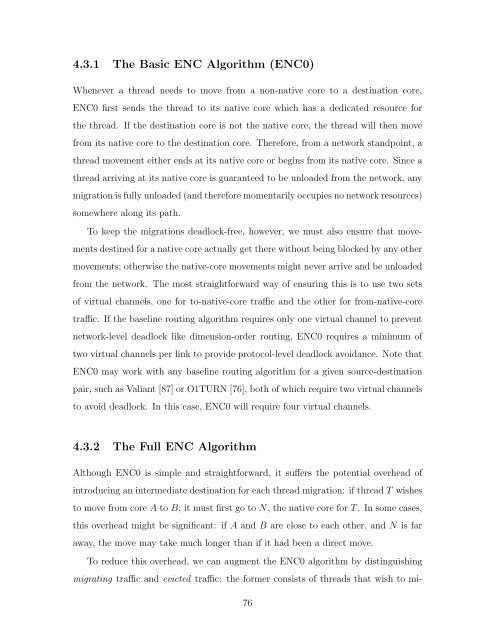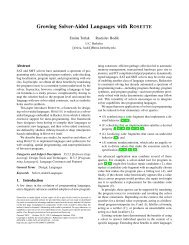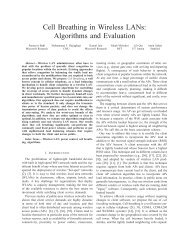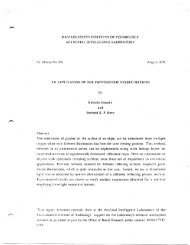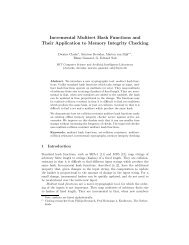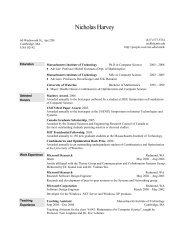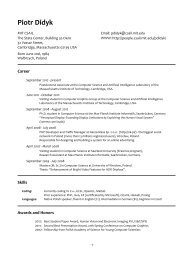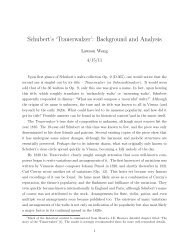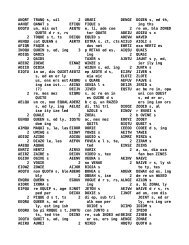On-chip Networks for Manycore Architecture Myong ... - People - MIT
On-chip Networks for Manycore Architecture Myong ... - People - MIT
On-chip Networks for Manycore Architecture Myong ... - People - MIT
You also want an ePaper? Increase the reach of your titles
YUMPU automatically turns print PDFs into web optimized ePapers that Google loves.
4.3.1 The Basic ENC Algorithm (ENC0)<br />
Whenever a thread needs to move from a non-native core to a destination core,<br />
ENC0 first sends the thread to its native core which has a dedicated resource <strong>for</strong><br />
the thread. If the destination core is not the native core, the thread will then move<br />
from its native core to the destination core. There<strong>for</strong>e, from a network standpoint, a<br />
thread movement either ends at its native core or begins from its native core. Since a<br />
thread arriving at its native core is guaranteed to be unloaded from the network, any<br />
migration is fully unloaded (and there<strong>for</strong>e momentarily occupies no network resources)<br />
somewhere along its path.<br />
To keep the migrations deadlock-free, however, we must also ensure that movements<br />
destined <strong>for</strong> a native core actually get there without being blocked by any other<br />
movements; otherwise the native-core movements might never arrive and be unloaded<br />
from the network. The most straight<strong>for</strong>ward way of ensuring this is to use two sets<br />
of virtual channels, one <strong>for</strong> to-native-core tra c and the other <strong>for</strong> from-native-core<br />
tra c. If the baseline routing algorithm requires only one virtual channel to prevent<br />
network-level deadlock like dimension-order routing, ENC0 requires a minimum of<br />
two virtual channels per link to provide protocol-level deadlock avoidance. Note that<br />
ENC0 may work with any baseline routing algorithm <strong>for</strong> a given source-destination<br />
pair, such as Valiant [87] or O1TURN [76], both of which require two virtual channels<br />
to avoid deadlock. In this case, ENC0 will require four virtual channels.<br />
4.3.2 The Full ENC Algorithm<br />
Although ENC0 is simple and straight<strong>for</strong>ward, it su↵ers the potential overhead of<br />
introducing an intermediate destination <strong>for</strong> each thread migration: if thread T wishes<br />
to move from core A to B, it must first go to N, the native core <strong>for</strong> T . In some cases,<br />
this overhead might be significant: if A and B are close to each other, and N is far<br />
away, the move may take much longer than if it had been a direct move.<br />
To reduce this overhead, we can augment the ENC0 algorithm by distinguishing<br />
migrating tra c and evicted tra c: the <strong>for</strong>mer consists of threads that wish to mi-<br />
76


